|
There is no question that the woman's body goes through a phenomenal series of changes. We are constantly evolving and growing into the next generation of ourselves. There is no other point in our life that this resonates as loudly as during menopause. My experience with menopause began unexpectedly early. Due to extensive chemotherapy and radiation from my cancer treatment, I was thrown into artificially induced menopause. To say I was exhausted is an understatement. There were moments where I felt fully disconnected from who I was as a person—as if a stranger had invaded my body, hijacking my mental, emotional and physical being. It was during a checkup that I discovered that my body had rapidly been depleted of all hormones, and I was then beginning menopause. Together with my physician, I developed strategies to help bring my body and mind back in balance. Yoga was an essential piece of this puzzle for me. You Are Not Your HormonesFor decades, menopause has been pigeonholed into a series of symptoms, but the process of this body transformation is much more complex. It is as unique as the women who experience the symptoms, however typically perimenopause begins in the mid-30s or 40s. Experiencing the stages of menopause can be overwhelming. There is an unpredictability to these changes, which can be emotionally, mentally and physically stressful. At the same time, menopause is a period of loss. You are saying goodbye to not only the menses but to a life which has been defined by reproductive health for the past 30 years. Yoga is a wonderful tool to introduce during this period of change. The yoga practice supports hormonal balance, stimulating both your body and mind while also providing permission for both to rest. Working in targeted postures can provide a release for the overtaxed adrenal glands, helping both calm and restore a sense of balance to the fluctuations that are occurring. When going through the series of movements detailed below, remember to put the breath first. Be gentle with your body and remain in tune with how your muscles are responding. This practice is meant to be soothing, providing balance to an overtaxed system. The Practice Your Body NeedsIf your brain is feeling a little heavy right now, you're not alone: Brain fogginess is a common complaint of those in perimenopause, as is memory loss. Yoga can help bring some clarity, especially if it's a new skill for you. Whether you're a seasoned yogi or a beginner, though, the integration of these poses into your lifestyle will help reduce stress and pain while helping to clear out the cognitive cobwebs. Before moving into these poses, take a moment to focus on your breath. Breathe in and out, paying attention to your natural pattern. As you move into the posture, try to remain in the full expression of the pose for 30 seconds and continue to breathe. Despite the hormonal shifts and changes that are occurring within, you can control your breath and provide your body with the gift of movement. 1. Nadi Shodana (Alternate Nostril Breathing)  All photos courtesy of Ann Green. This incredibly calming breathing asana is a reminder that despite the fluctuations in our bodies, we can make a choice. This practice encourages us to cease our reactivity and be conscious of our breath, as we breathe oxygen into one nostril and release carbon dioxide out from the other. Rather than filling ourselves with food or other anxiety or hormone-driven choices, Nadi Shodana encourages us to fill our body and mind with breath. Begin by sitting comfortable and gently close your right nostril with your thumb. Inhale through the open nostril and then close it using your ring finger. Open the right nostril to exhale the breath out slowly. Switch by breathing back into the open right nostril, keeping the left closed and repeat this cycle a few times. 2. Child's Pose Into Sphinx  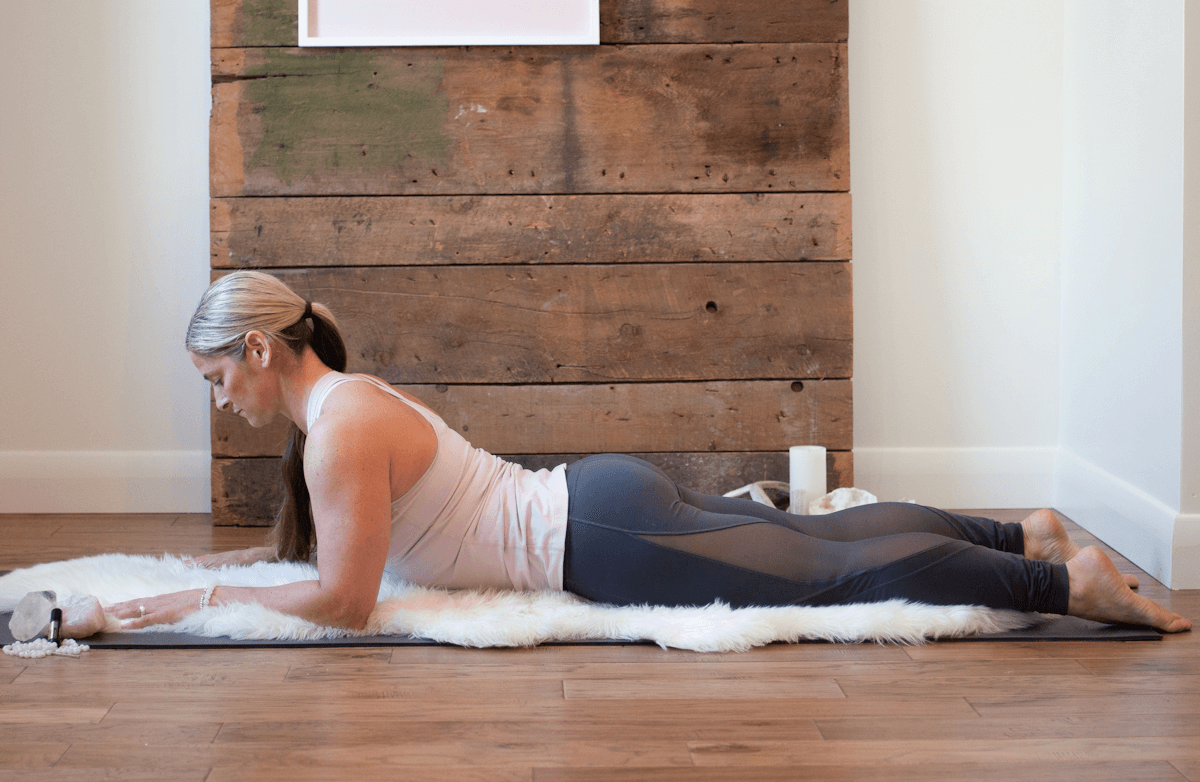 This pose encourages us to soften our bodies—in particular, the broad ligament between the ovaries—while supporting our lower back. As we move the body into sphinx, the gentle heart-opener supports both the core and torso, allowing us to feel grounded. When sitting in child's pose, aim to open your knees about as wide as the hips before shifting the hips back and laying the torso down on top of the thighs. As you move to sphinx pose, you'll first need to fully extend to lay down on your belly. With your forearms parallel on the ground in front of you, push gently into the hands to extend the arms, keeping the belly pulled into the spine. 3. Cat and Cow 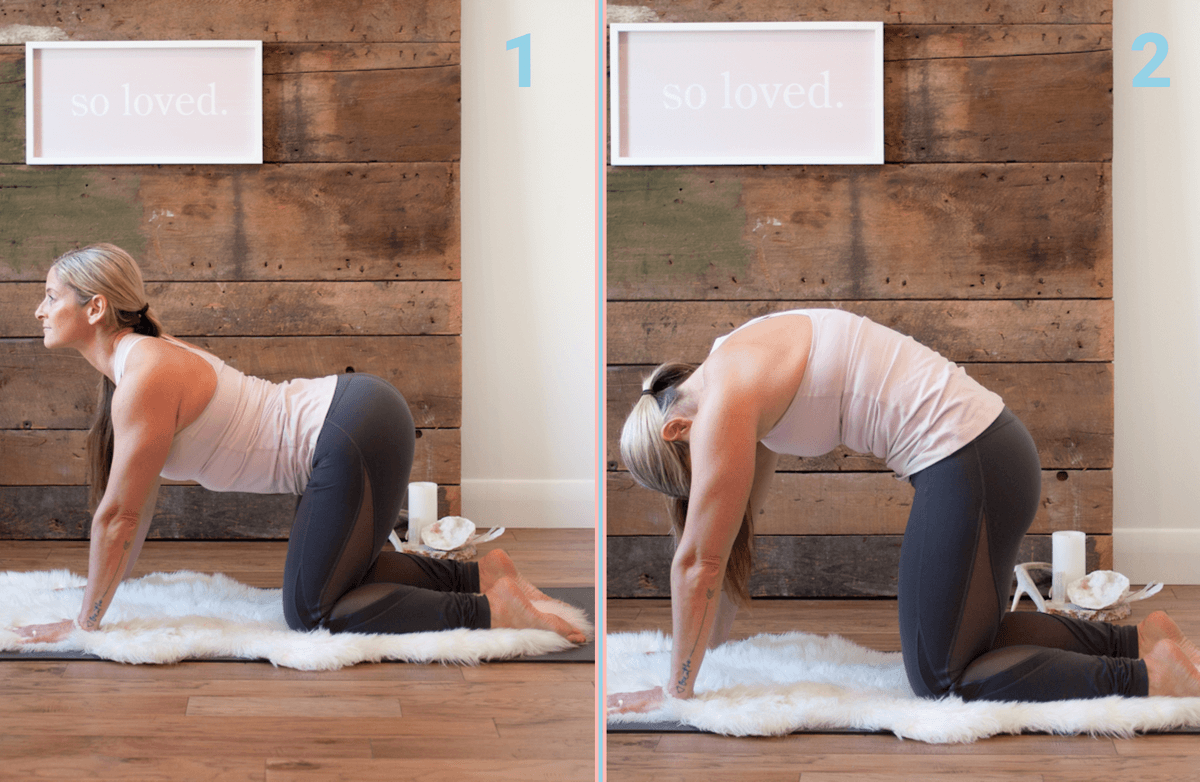 The repetitive motion of cat and cow encourages a suppleness of the spine, moving from the extended spine of cow to the gentle curve in cat. Think of this pose as a gentle massage for your spine and belly. Focus on drawing the shoulder blades down and away from the ears when in cow, then work to push into the ground and open up the shoulder blades at the top of your back in the full expression of cat. Inhale as you drop into cow and exhale fully to reach cat. 4. Legs up the Wall With a Heart Opener 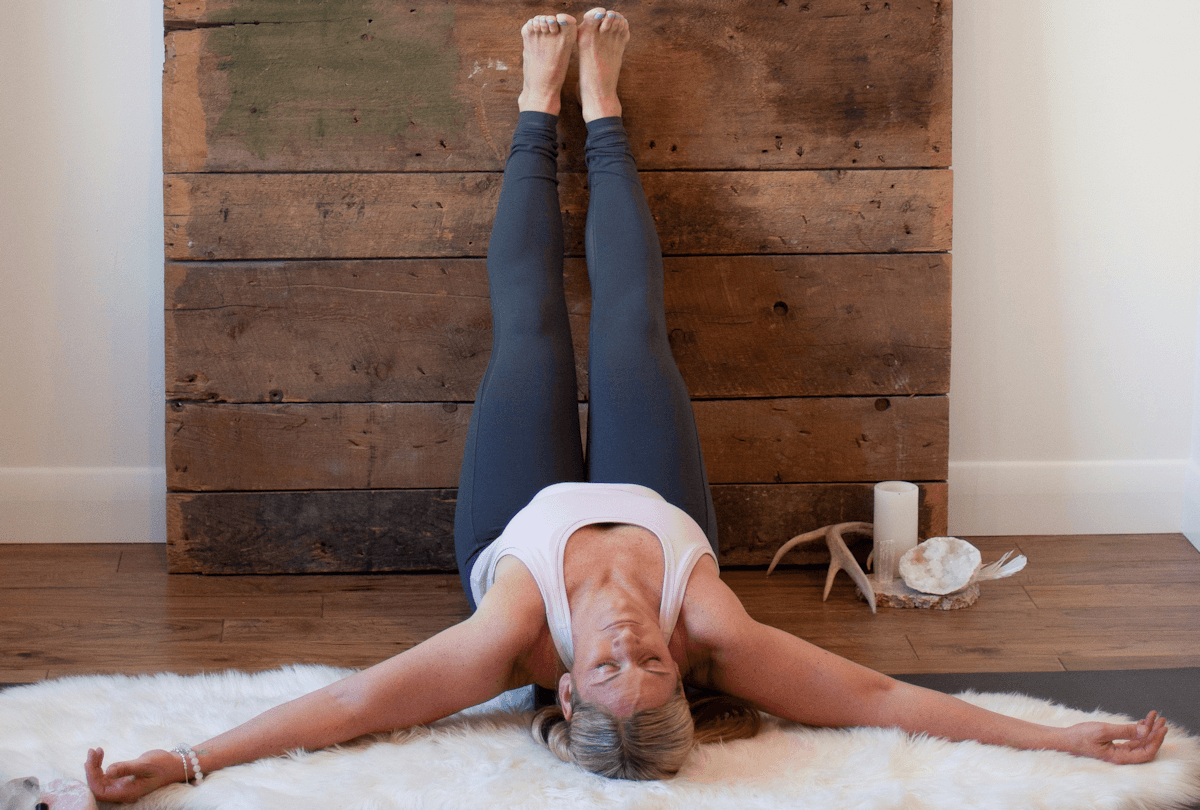 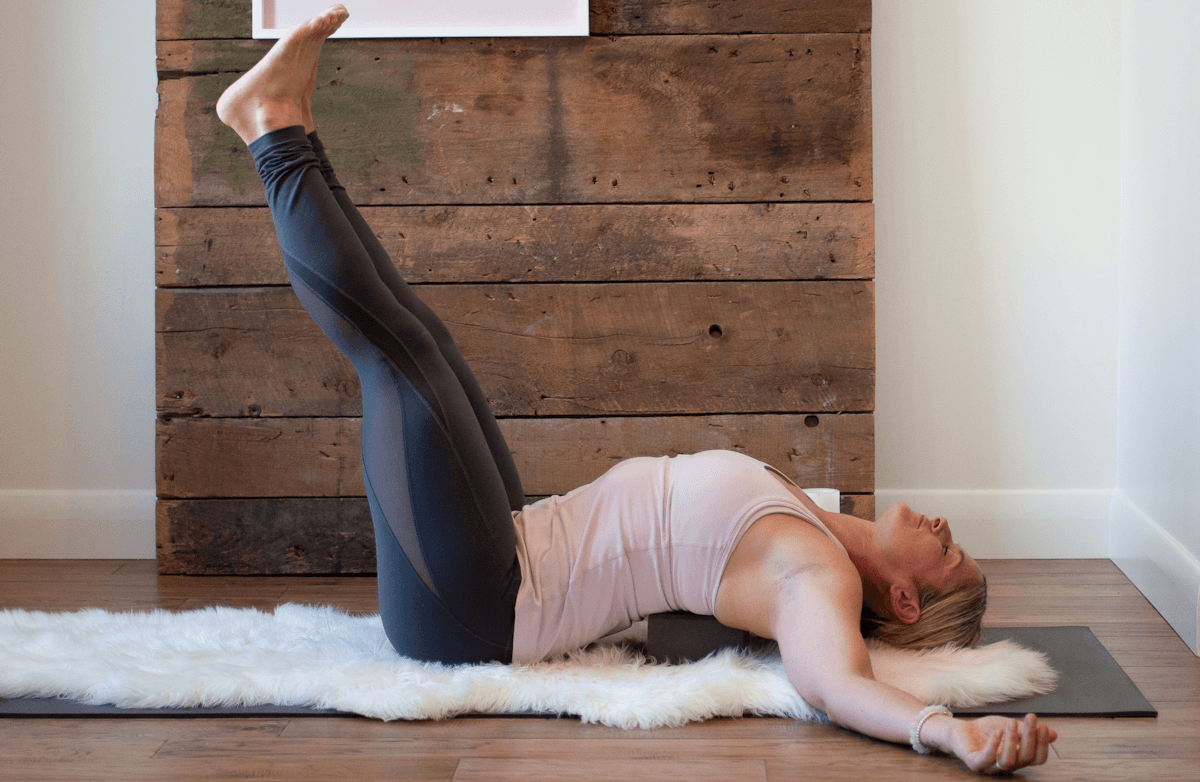 This gentle heart-opening provides spaciousness in your chest, encouraging full and deep breaths, while resting the legs up the wall is great for overall circulation. The entire posture offers a new perspective, taking the weight off your feet and encouraging you to release the tension from the day. Use a yoga block or pillow behind the shoulder blades to open up the chest area in this pose. 5. Seated Forward Fold Into Bridge 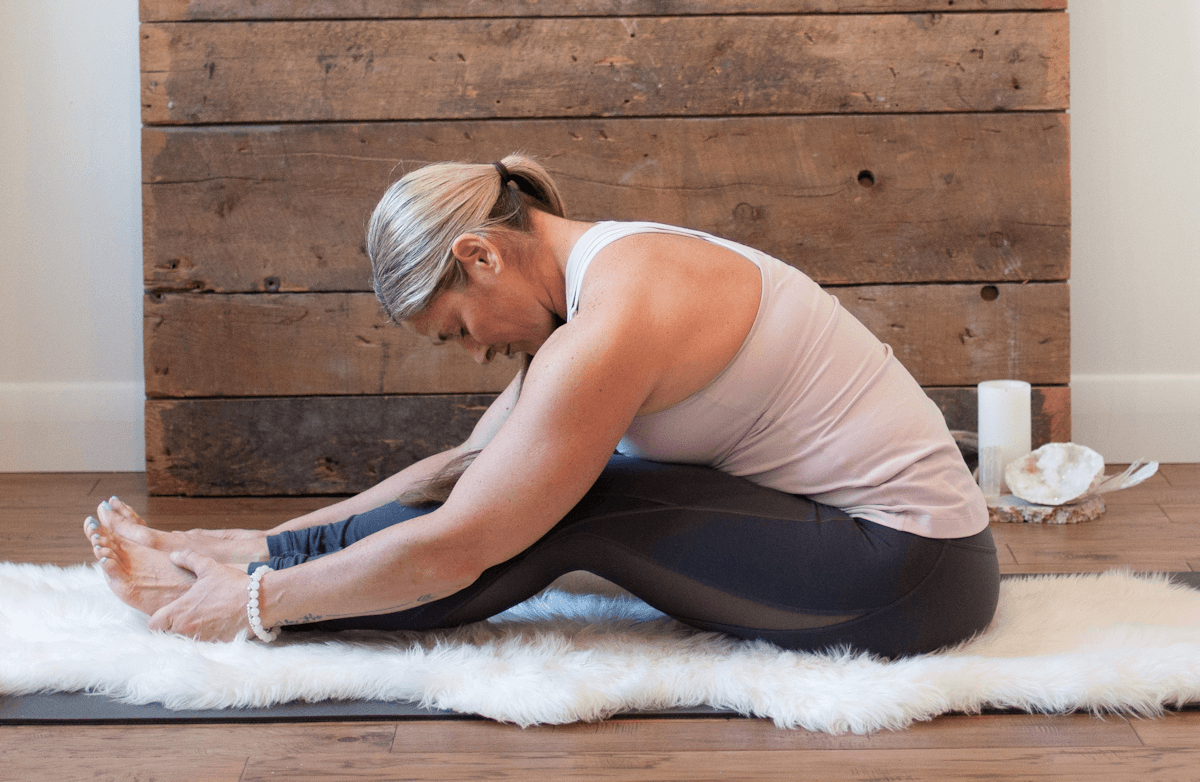  Folding forward helps to decompress your nervous system, slowing down the messages that may bounce around in your head. Your only focus should be bringing your forehead down toward the earth; this posture is not about perfection but simply the practice of folding your body into itself, allowing your arms to connect with your legs and your hands to contact the floor. From there, move into bridge by lying down on your back and bringing your heels in closer to your bottom so your knees are facing the ceiling. Think about slowly peeling your spine off the ground one vertebrae at a time until your back is flat and lifted. This strong heart opener reminds us that we are capable, that you have your own back and that you can be open while remaining rooted into the earth. Be mindful of your breath, allowing it to fill your body with oxygen as you continue to explore this posture. Even though you are physically bearing on the back of your shoulders, bridge opens your chest releasing the weight of your body up into the air. 6. Savasana 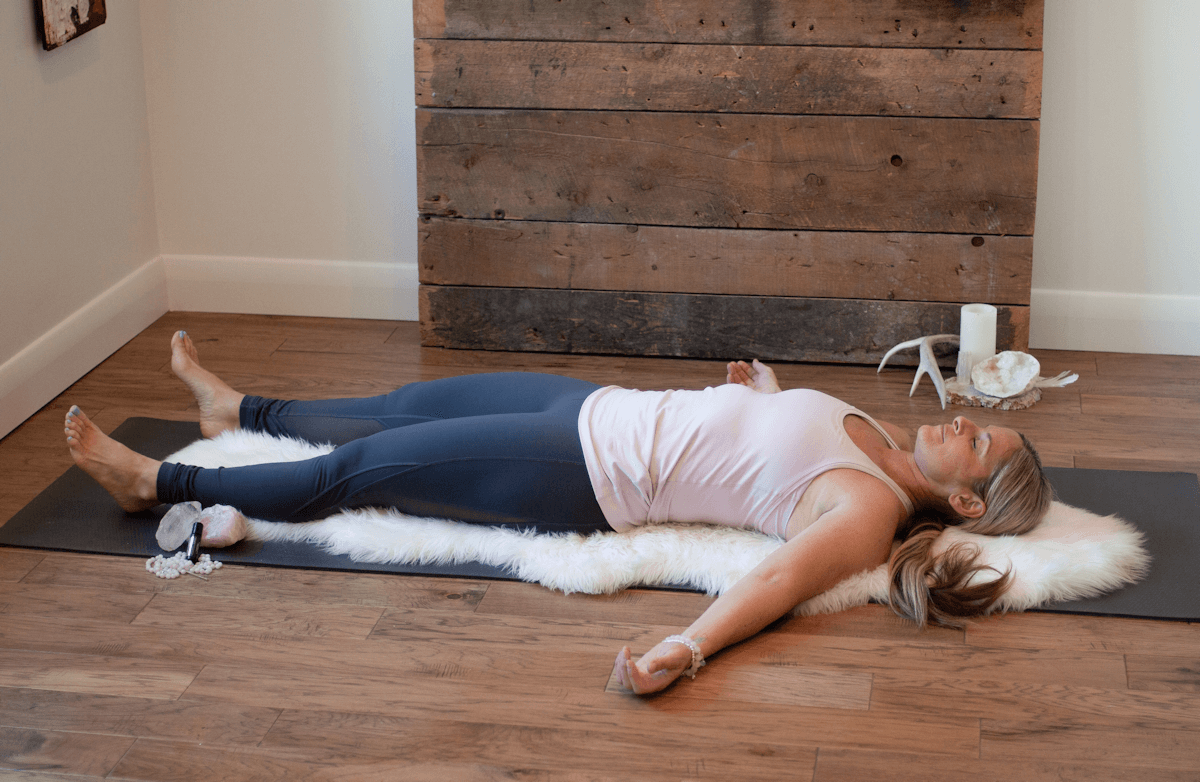 Savasana is meant to be a sense of putting things to rest. As you lie on the floor with your entire body in contact with the earth, allow new seeds to grow. Spend some time here, permit your body and mind to take a break. Savasana is a reminder that we can be present and aware, while also being physically relaxed. Generally, as women, we need to give ourselves a break. Take the nap back, find ways to restore your energy, even if it's only for a few minutes. During this transitional period of menopause, it is important to encourage a practice of vitality. This will help clear the brain fogginess, support a depleting hormone system and build your confidence as you transition from one stage of creativity to the next. 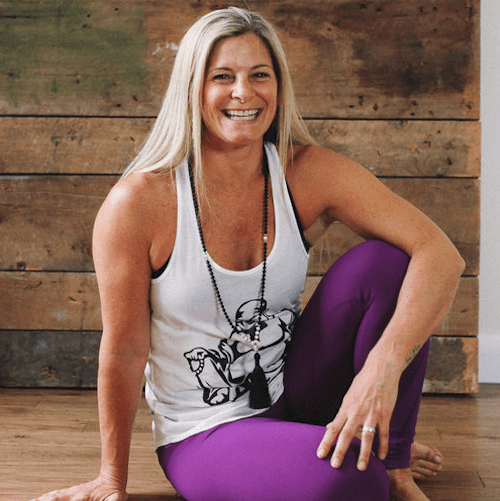 About the Author As a past heptathlon, world athlete, yoga teacher and the founder of BLiSS Yoga, Ann strongly believes in the importance of integrating breath and movement for both daily health and pain management. Ann is a yogi, runner, surfer and shineologist. Her teaching is built upon traditional foundations of yoga and fitness with a modern, playful approach. Ann holds multiple degrees, including a master's degree in exercise science and a bachelor's degree in psychology. About the Author As a past heptathlon, world athlete, yoga teacher and the founder of BLiSS Yoga, Ann strongly believes in the importance of integrating breath and movement for both daily health and pain management. Ann is a yogi, runner, surfer and shineologist. Her teaching is built upon traditional foundations of yoga and fitness with a modern, playful approach. Ann holds multiple degrees, including a master's degree in exercise science and a bachelor's degree in psychology. |
Popular Entries
Related Entries
More From SparkPeople
|















/d24fe519-442c-4570-b6ae-e2e714a8fe92.jpg)






.jpg)